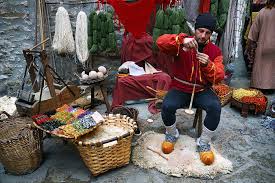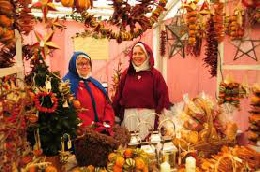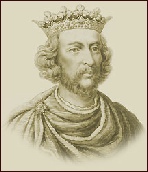
We research, care for and share the archives of the parish of Barton Stacey, Hampshire.

Markets and fairs fall into two categories: prescriptive and granted. Many of the oldest and
most successful markets and fairs were held by prescriptive right, that is, by custom.
The prescriptive markets which first appear in the records in the thirteenth century had
already been trading for several centuries.
The second category of markets and fairs is those set up by a grant. By 1066, the right to establish a market or fair was considered to be a royal franchise. However, it is not until the thirteenth century that there is systematic evidence that the king enforced his right to licence all markets and fairs. From 1199 onwards, royal grants were
recorded on the charter rolls.
Barton Stacey was one of the earliest manors in Hampshire (probably second only to
Longstock Manor) to be granted royal permission to hold
a market.
King John granted a market to Emerico de Sacy on 5 March 1215. The market was
held weekly somewhere in the manor lands. We even know on which day of the
week it was held. On 5 May 1221 ‘the day of Emeric de Stacy’s market was changed
from Saturday to Friday’.
The Difference between a market and a fair
Medieval Fairs were a gathering of buyers and sellers, assembled at a particular
place with their merchandise at a stated or regular season, For trade.
The Latin world “feria” meaning holy day was the origin of the word “fair.” Each
feria was a day when large numbers of people would assemble for worship. The
commerce and trade of the Medieval fairs meant money. The church took an active
part in sponsoring fairs on feast days, and as a result, fairs came to be an important source of
revenue for the church. Commerce, by way of the Medieval fairs and religion became closely entwined.
Barton Stacey was only the fourth manor in Hampshire to be granted a royal charter to hold a fair.
On 8 October 1241 King Henry III (seen here) granted to Eymery de Sacy, Lord of the Manor
of Barton Stacey, a charter permitting the holding of a fair on the feast of St Margaret.
Fun at Medieval Fairs
Although the main objective of the Medieval fairs were trade and commerce, every fair contained some element of merry-making. Possibly starting from merchants trying to sell their goods, people were determined to attract the most customers to their stalls. Therefore, from a very early date, there was always fun at the fair. Any entertainment to attract a crowd, singers, musicians, acrobats, stilt walkers and fools. Fairs included various contests such as archery tournaments. Medieval tournaments sometimes coincided with Medieval fairs. Refreshments were available.

< Back
In mediæval times the manor was the nucleus of English rural life. It was an administrative unit of an extensive area of land. The whole of it was owned originally by the lord of the manor. He lived in the big house called the manor house. Attached to it were many acres of grassland and woodlands called the park. These were the “demesne lands” which were for the personal use of the lord of the manor. Dotted all round were the enclosed homes and land occupied by the “tenants of the manor”.
MORE ABOUT BARTON STACEY MANOR.
ROGO and EMERY de Sacy
Barton Stacey knights and early Lords of the Manor.
Our research into their lives prompted the 2017 geophysics and 2018 archaeological dig to discover the medieval manor house.
We are in the process of redeveloping this page.


